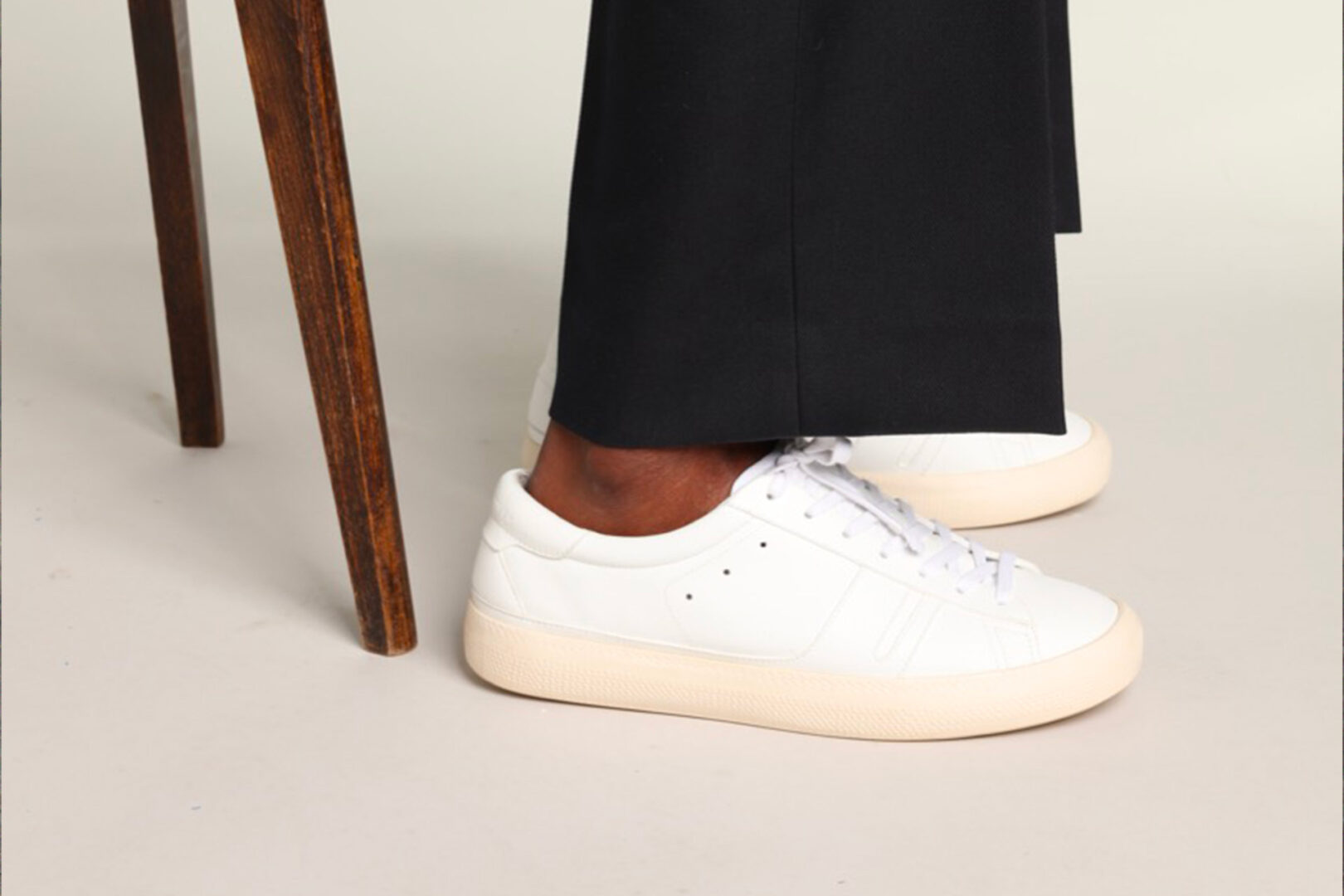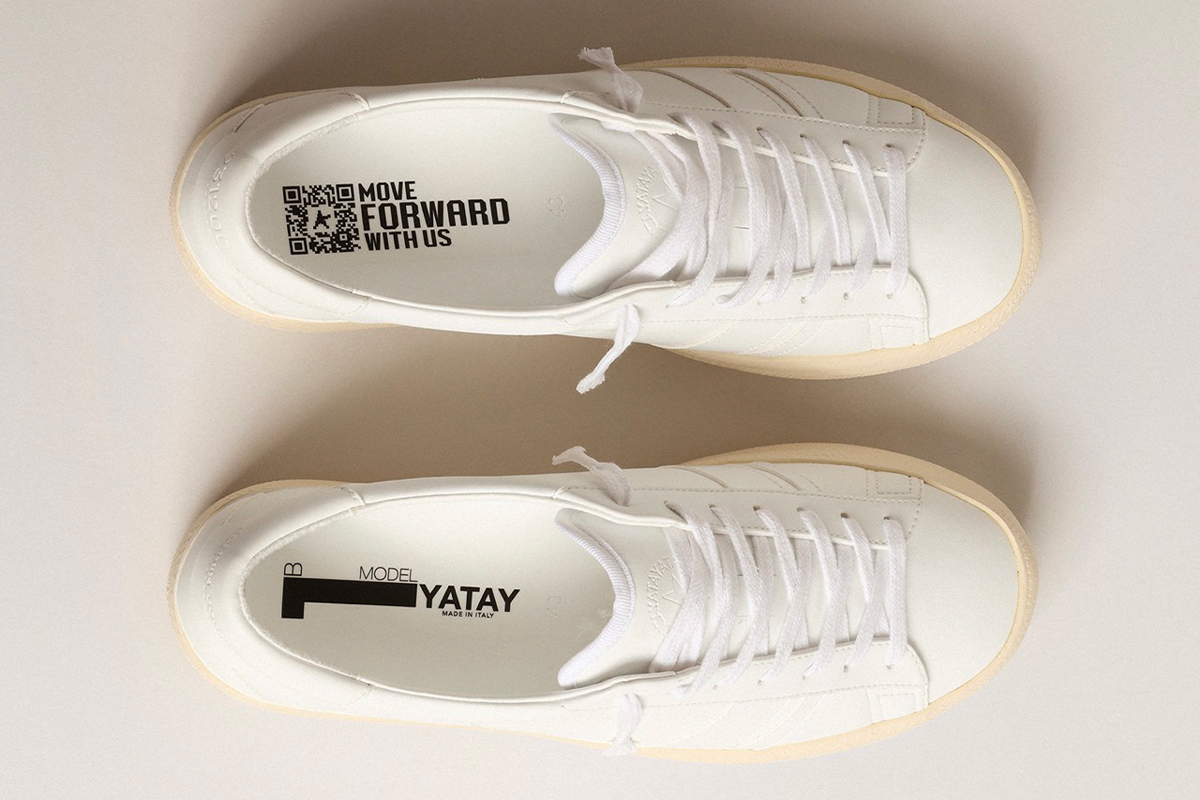Golden Goose plans investment of 1.2 million euro with Coronet to create Yatay, the first Made in Italy co-action platform for sustainable innovation
Yatay – Golden Goose and Coronet
Golden Goose recently decided to partner with Coronet, an alternative material manufacturer. The scope of this venture is to saturate the sustainability element into the luxury market. «We wanted to create a platform which not only surrounds innovation but also includes the consumer», says Silvio Campara, CEO of Golden Goose. The partnership’s current focus is Yatay, the first Made in Italy co-action platform for sustainable innovation. Luxury Italian sneaker brand, Golden Goose, is known for its distressed and handmade shoes.
Elevating the meaning of sustainability in the luxury market
The collaboration was made official on April 22; Golden Goose invested 1.2 million euros for forty percent ownership while Coronet invested 1.8 million euros for the remaining sixty percent. This is the latest action demonstrating the interest of luxury brands in accommodating sustainability for the future.
Campara explains that this move has the goal of merging innovation from a sustainability angle. With this, their main focus is on how they can scale that to their current product proposition.
«The goal is to elevate the concept of sustainability to that of responsibility», says Campara. «As part of the journey, you need to measure and certify things. They may not sound so exciting but that brings a lot into transparency. These are things which nurture the concept of sustainability into something bigger. Into responsibility».
The result of Golden Goose and Coronet: Yatay Model 1B sneakers
Their first collaborative release celebrated Earth Day with the Yatay Model 1B sneakers. The results blend Coronet’s expert research in the development of animal-free and bio-based materials with Golden Goose’s luxury craftsmanship and knowledge of its customer. The material itself is bio-based, made from vegetable sources, recycled polyester and biodegradable rubber.
They point to the fact that sourcing these materials does not contribute to the competition in the food chain. «There is land, which due to their characteristics, you cannot use to grow crops for food purposes», says Federica Ruzzi, Chief Sustainability Officer who joined the brand last year. Crops grown on that type of land would not be suitable for humans nor animals.
The creation of this material reduces carbon emissions by up to ninety percent and reduces water usage by sixty-five percent. Everything is made in Italy, which Campara explains is another bonus to the sustainability aspect of it all. In such a competitive market, supply and production chains can extend to all parts of the world; sourcing materials from one country, manufacturing items in another, and selling it in yet another country.
Keeping a partnership between innovation and a brand’s product proposition within one country is key to maintaining an authentic level of sustainability.
Giving consumers more than one way to be sustainable
Another one of Yatay’s sustainable assets is the packaging. Usually, this consists of a shoe box and at least one other packaging container to ship it in. However, Golden Goose merged the shipping and product boxes into one, reducing carbon emissions even further.
The material of the box is made up of up to fifty percent recycled FSC® paper. «You give the customers an option to have a responsible choice when they buy a Yatay product», says Campara.
It also aids in developing the concept of sustainability even further. When merging innovation with environmentally friendly solutions, it is not just about the final product.
It is about what the brand stands for and what they do above and beyond selling their merchandise. With Yatay, it is the platform, the people involved and the research. «There are several angles from which we can really innovate. It is not only from the materials», says Campara
Relating to the customer to create more sensibility around sustainability
Transparency and traceability are other key features of the co-action platform. It is open-source, in which anyone can have access to their sustainability ventures. They involve the customer in a number of ways. One of them is through the QR code inside the sneakers.
When customers scan it, it brings them to the Golden Forest. Here they can plant a tree and watch it grow. By doing this, they have access to carbon emission information in «a more romantic way. It’s part of the scope to generate sensibility to the final customer on this topic», says Campara.
«In this world where we are moving from product to purpose, transparency is the key. Traceability is a the element of transparency. It is linked to the supply chain. It’s critical to find a way, through technology, to have a clear point of view of what is behind our product».
This could be through a number of means, including blockchain and NFTs. In a way, it is whatever is more relatable to the customers at a certain point in time.
Focusing on the scalability of potential solutions
Yatay is not just about performance but about scalability. It is easy to find new innovation out there which, on paper, would solve all of our problems. However, the majority are simply not scalable. Either that, or they simply don’t fit into a sustainable spectrum with a high-quality standard.
«In this case, we tried to find the right balance between technology and sustainability. It is the most relevant challenge in sustainability, currently», says Ruzzi. «There is no perfect solution». She explains why they decided to keep the material in its natural white color: it’s scalability.
Adding a dyeing process to prioritize color variety for the customer would contradict their scalable sustainability goals. Campara further explains that the lack of color choices is also because technology and coloration is simply not there yet in terms of a sustainable and scalable solution.
How Golden Goose’s design component and Coronet’s R&D fit together
While the co-action platform showcases the qualities of both Coronet and Golden Goose, they want to make sure that they differentiate their peculiarities. Campara explains that by doing so, they avoid misleading the customer. In essence, a traditional pair of Golden Goose sneakers are handmade with original leather.
«Whilst Yatay is made from the most innovative leather, bio based in this case. It is white and simple». Therefore, As the Yatay Model 1B sneakers do not have Golden Goose’s signature distressed design component, the final price is therefore lower; from an average 455 euros per sneaker, the new model is 295 euros.
This minimalist design is to ensure that the material and its innovation remain the focus of attention. «We want to be honest with our customers».
G Generation— a different take on social sustainability
Stepping away from the material, Golden Goose is also working on the social side of sustainability. Above fair working conditions, Campara explains that it is about realizing their contribution to a more innovative fashion industry. There needs to be more of an awareness around what each generation can bring to the table.
In this sense, he created the G Generation, a committee of members of the Golden Goose family who are under thirty years old. Campara says that the young people are those who inspire the new vision. «They direct the brand in understanding what the next sensibility topic is». For now, it is made up of forty-five people. They come up with topics for different agendas, projects and give feedback.
One example which came from the G Generation is the implementation of Golden TV on their Instagram. The committee realized that it is no longer enough to post about something on social media. It is about movement, people from the outside and showcasing what it looks like in the real world.
How Yatay created an entirely new sense of community building
This community building is not only seen within the company. It is something which Golden Goose wants to diffuse to the outside as well. They saw that the innovation of sustainability with Coronet did in fact attract more like-minded people.
«We noticed that a huge component of people purchasing Yatay were not even part of our community» Campara explains. «These are new customers joining the brand thanks to this new element». He goes on to say that nowadays, people purchase a product to feel part of the community.
«It is key that everyone buying Yatay is not buying Yatay because they need a pair of sneakers. Rather, because they want to feel part of Golden Goose’s commitment in this topic. The sneakers are the enablers of this conversation». With a topic as intricate and complex as sustainability, it is easy for consumers to gloss over the technical aspects.
Anything irrelevant gets disregarded, which can happen when information gets too technical. However, building a community can give individual people a sense of responsibility. Giving them the opportunity to explore sustainability with many different angles can educate them in more ways than one.
The Sustainable Development Goals: the collaboration with Coronet
Golden Goose published their first Sustainability Report, with a plan to make it an annual habit. This is one of the ways they want to engage the community through a more technical side of sustainability. By 2025, they want to have developed the first ever fully circular project.
For their Forward Agenda, they have a set of transparency targets with evolving processes. This agenda is set on four main drivers: «We innovate, we craft, we care and we share», Ruzzi examples. Each of these looks into ways which Golden Goose can make up a more sustainable luxury market. They have ten targets set for 2025.
They worked to align these with six of the Sustainable Development Goals. For each of these four drivers, they identified some projects, one of them being the launch of Yatay and the collaboration with Coronet.
Yatay
Golden Goose partnered with Coronet to create Yatay, the first Made in Italy co-action platform for sustainable innovation. They released their first creation on Earth Day, the Yatay Model 1B Sneaker.




















